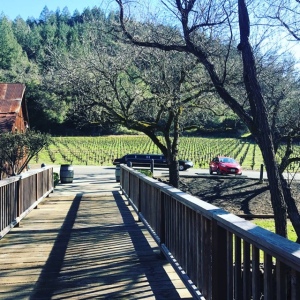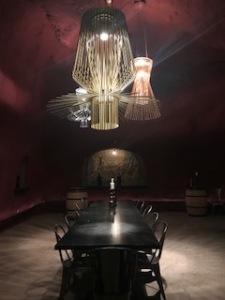It’s been almost a year since the COVID era began. The past year has brought many new experiences, some of them unpleasant but a few of them were unexpected surprises. Due to dwindling access, availability, and some forced changes of personal habit I stumbled upon a few new wines during this crazy time. Here are some of my best surprises from the COVID year; perhaps they will give you a smile as well.

Photo credit: Fontanafredda
My favorite local restaurant ran out of my usual go-to wines so I had to try some others with my takeout. One of them was the 2017 Ebbio Langhe Nebbiolo ($30). I’m a huge Barolo fan and typically like Nebbiolo but this one is a real bargain for what it offers. Dusty red berry, light tobacco, and lithe body make this a terrific offering. In fact, I’m wondering if I’ll like it better than my old favorite once it comes back into stock. 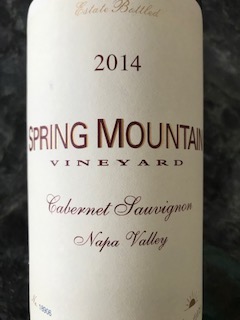
Another standout, which is an older and much more “special occasion” wine was the 2014 Spring Mountain Cabernet ($75). Spring Mountain wines are known for their robust power and iron fist, usually needing many years to become approachable. This one has arrived in its happy place with palpable energy coursing through its blackberry, currant, and cedar notes. A brilliant wine that got even better over a few days.
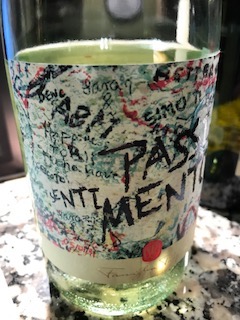 I am woefully behind on blogging (my friend calls this the “COVID ennui”) and I finally tapped into a few delightful wines that I was sent months ago. The label on the 2018 Passimento ($18) alone makes it worth a second look and drink. From the Veneto region of Italy, this lovely white wine is made from Garganega grapes and tastes of peach, apricot, and almond flavors woven together with racy acidity. Three months in oak rounds out the palate and gives it an extra boost in body. Perfect for a warm summer day or even a cool winter afternoon spent outside seeing an old friend as I did.
I am woefully behind on blogging (my friend calls this the “COVID ennui”) and I finally tapped into a few delightful wines that I was sent months ago. The label on the 2018 Passimento ($18) alone makes it worth a second look and drink. From the Veneto region of Italy, this lovely white wine is made from Garganega grapes and tastes of peach, apricot, and almond flavors woven together with racy acidity. Three months in oak rounds out the palate and gives it an extra boost in body. Perfect for a warm summer day or even a cool winter afternoon spent outside seeing an old friend as I did.
Another great treat was the Bruno Paillard Champagne Reims Rosé Première Cuvée Extra Brut ($59). This is a beautifully delicate and scintillating sparkler that was one of my year’s best. The fact that I’ve had the great pleasure to meet Alice Paillard a couple of times only made it better as it expresses her quiet assurance, elegance, and poise to a tee. 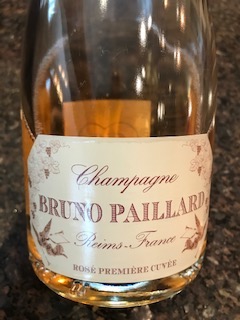
I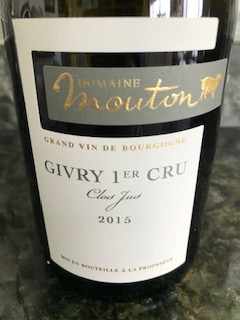 was invited to review the wines of Elden Selections earlier in 2020 and one of the wines I was sent, the 2015 Domaine Mouton Givry 1er Cru Clos Jus ($59), is still on my mind. “Jus” means “juice” and true its name, this wine was juicy yet delicate with bramble raspberry and fresh mineral notes.
was invited to review the wines of Elden Selections earlier in 2020 and one of the wines I was sent, the 2015 Domaine Mouton Givry 1er Cru Clos Jus ($59), is still on my mind. “Jus” means “juice” and true its name, this wine was juicy yet delicate with bramble raspberry and fresh mineral notes.
Eating out during the summer and even early cold spring was a sheer thrill. Along with those evenings came some other new wines in the 2016 Alpha Estate SMX ($34) and the 2016 Tancredi Donnafugata ($39). The Alpha Estate SMX is a red blend of 60% Syrah, 20% Merlot, and 20% Xinomavro from Amyndeon, Greece. Layered and supple, this wine teems with dark fruit notes of black cherry and plum interlaced with sweet spice and pepper flavors. A full-body and crisp lean acidity round out the palate.
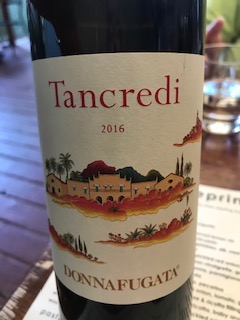 The Tancredi is from Sicily and another great find. Blended from Cabernet Sauvignon, Nero d’Avola, and some Tannat grapes, this wine exudes savory notes of licorice, stone, and tobacco amid its black plum flavors. Medium-bodied with fine-grained tannins, this wine has some staying power and should be good for several more years.
The Tancredi is from Sicily and another great find. Blended from Cabernet Sauvignon, Nero d’Avola, and some Tannat grapes, this wine exudes savory notes of licorice, stone, and tobacco amid its black plum flavors. Medium-bodied with fine-grained tannins, this wine has some staying power and should be good for several more years.
There was a brief respite last fall where I was able to go on a short domestic trip. The hotel I was at was low on wines like everyone else but our sommelier went rummaging in their cellar and came out with the knockout 2005 Marques de Murrieta Castillo Ygay Gran Reserva Especial ($110) for my friend’s birthday. 
Wonderfully smooth and seamlessly integrated, this wine, made from 81% Tempranillo and 19% Mazuelo, exudes classic savory tobacco, dried cherry, and tarragon notes with a haunting spicy finish. The Tempranillo was aged in American oak in traditional Rioja style while the Mazuelo was aged in French oak. It all culminates in a beautiful marriage of flavors and a perfect birthday celebration. I would like to rummage in that hotel’s cellar a bit more.
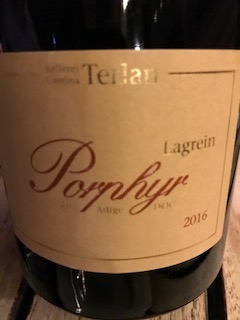 Also on that trip, we were treated to the 2016 Terlan Porphyr Lagrein from Trentino-Alto Adige, Italy ($75). Lagrein is one of those unique grapes that’s harder to find but when it’s made as well as this one, it’s extraordinary. A cross between the lighter body of Pinot Noir and the zesty flavors and electric acidity of Nebbiolo, this grape can hold its own. A striking inky color, this wine tastes of violets, clove, and black tea. While it is medium-bodied, this wine has impressive structure and heft while retaining its elegance and smooth tannins.
Also on that trip, we were treated to the 2016 Terlan Porphyr Lagrein from Trentino-Alto Adige, Italy ($75). Lagrein is one of those unique grapes that’s harder to find but when it’s made as well as this one, it’s extraordinary. A cross between the lighter body of Pinot Noir and the zesty flavors and electric acidity of Nebbiolo, this grape can hold its own. A striking inky color, this wine tastes of violets, clove, and black tea. While it is medium-bodied, this wine has impressive structure and heft while retaining its elegance and smooth tannins.
Back at home, there were a few periods where we locked in so long that I started going through my own collection and seeing how things were tasting. Three standouts here were:
 2013 Sbragia Monte Rosso Vineyard Cabernet Sauvignon. I loved this wine when I first had it sitting in the Sbragia tasting room in Moon Mountain District, Sonoma years ago. On a particularly barren day last year, I treated myself to my last remaining bottle. It is one of those wines where even a great memory paled to its present form. It was simply ethereal. Using my Coravin, I enjoyed a glass every day for 4 days, and this wine never stopped delighting.
2013 Sbragia Monte Rosso Vineyard Cabernet Sauvignon. I loved this wine when I first had it sitting in the Sbragia tasting room in Moon Mountain District, Sonoma years ago. On a particularly barren day last year, I treated myself to my last remaining bottle. It is one of those wines where even a great memory paled to its present form. It was simply ethereal. Using my Coravin, I enjoyed a glass every day for 4 days, and this wine never stopped delighting.
2011 Il Poggione Brunello I always love Brunello but I have to be in a certain mood for it. It’s not a subtle wine so it takes some energy I think to really appreciate it. My brother gave me this wine a few years ago and I was determined to hang on to it. However, my resolve weakened during COVID as I considered how fleeting time and opportunity are so I decided to dive into it.
Another experience of it being better than I remembered ensued. Made from 20-year-old vines and 100% Sangiovese grapes, this lush and radiant wine tasted of toasted herbs, black cherry, plum, sweet spices, and tobacco. A powerful backbone with vibrant acid and a cedar finish rounded out this decadent pleasure.
 The 2010 Madrigal Cabernet Sauvignon from Napa was perhaps the best bargain of the year. I bought it several years ago on a Napa wine trip for $25. Having forgotten about it until I was going through my wine collection this summer, I thought it would be past its prime but it was a wonderful surprise, bursting with blackberry, currant, and cigar box spice. Smooth round tannins dotted with menthol notes made for a lingering finish.
The 2010 Madrigal Cabernet Sauvignon from Napa was perhaps the best bargain of the year. I bought it several years ago on a Napa wine trip for $25. Having forgotten about it until I was going through my wine collection this summer, I thought it would be past its prime but it was a wonderful surprise, bursting with blackberry, currant, and cigar box spice. Smooth round tannins dotted with menthol notes made for a lingering finish.
Hopefully this year will bring a much happier state of the world for everyone. In the meantime, take the opportunity to try new wines when stores, restaurants, and your own cellar run low. You might be pleasantly surprised as I was. 

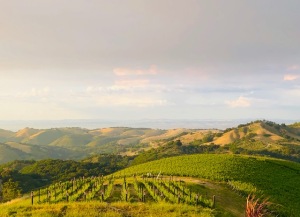

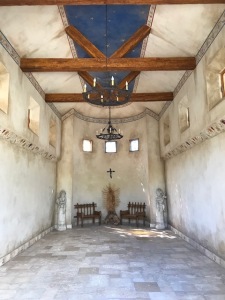
 Paso Robles is a terrific destination on its own but then there are the vineyards which are a huge draw and offer wonderfully diverse offerings within a manageable area. This is due to the Templeton Gap which contributes to the greatest day-to-night temperature swing of any of California’s wine appellations. Over 60 wine grape varieties are grown in Paso Robles ranging from Cabernet Sauvignon, Zinfandel, and Merlot to Rhone varieties such as Syrah, Roussanne, and Viognier. I also had some excellent Tempranillo and Tannat. It’s all done well in Paso thanks to the daily 50-degree temperature swing, abundant sunshine, and naturally long growing season. If you’re a wine lover, Paso Robles is a must-see once travel gets going again.
Paso Robles is a terrific destination on its own but then there are the vineyards which are a huge draw and offer wonderfully diverse offerings within a manageable area. This is due to the Templeton Gap which contributes to the greatest day-to-night temperature swing of any of California’s wine appellations. Over 60 wine grape varieties are grown in Paso Robles ranging from Cabernet Sauvignon, Zinfandel, and Merlot to Rhone varieties such as Syrah, Roussanne, and Viognier. I also had some excellent Tempranillo and Tannat. It’s all done well in Paso thanks to the daily 50-degree temperature swing, abundant sunshine, and naturally long growing season. If you’re a wine lover, Paso Robles is a must-see once travel gets going again.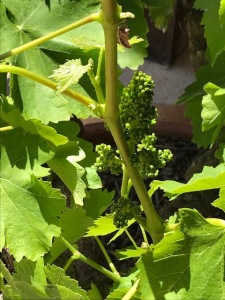
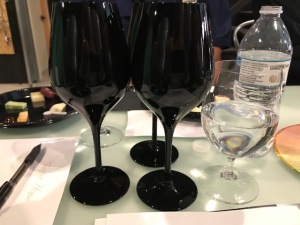
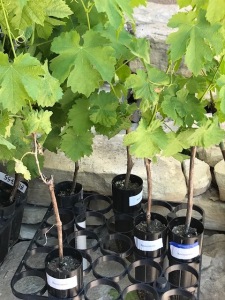
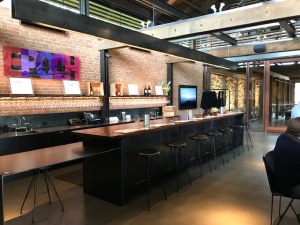
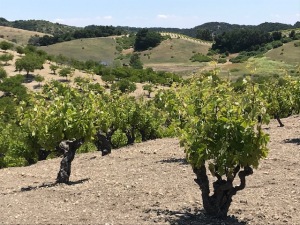
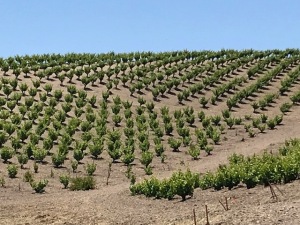
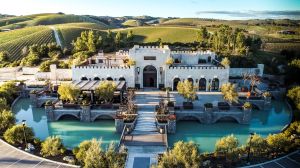

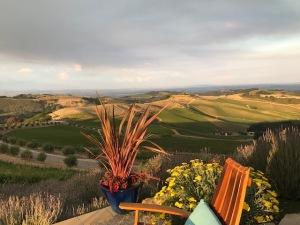
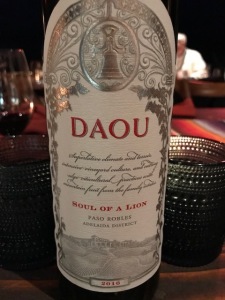
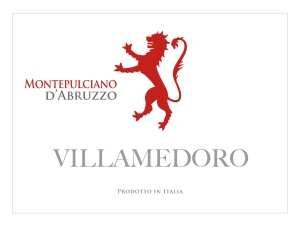 Located on Italy’s Adriatic side, both regions feature the Montepulciano grape which produces wines with robust tannins and deep color. The 2018 Villa Medoro Montepulciano d’Abruzzo was an earthier style than the fruitier 2017 Montecappone Rosso Piceno (a blend of 80% Montepulciano and 20% Sangiovese) yet both of these wines demonstrate the complexity that Montepulciano can achieve near the Adriatic coast.
Located on Italy’s Adriatic side, both regions feature the Montepulciano grape which produces wines with robust tannins and deep color. The 2018 Villa Medoro Montepulciano d’Abruzzo was an earthier style than the fruitier 2017 Montecappone Rosso Piceno (a blend of 80% Montepulciano and 20% Sangiovese) yet both of these wines demonstrate the complexity that Montepulciano can achieve near the Adriatic coast.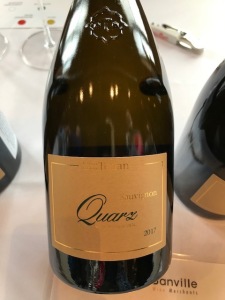 Moving to the Alto Adige region, Cantina Terlano’s 2017 A.A. Terlano Saugivnon Quarz was scintillating with nervy acid, dominant gooseberry and grapefruit, and wet stone minerality on the long textural finish. Made with gentle whole cluster pressing and aged 9 months on lees in 50% large wood barrels and 50% stainless steel, this wine is a remarkably unique Sauvignon Blanc from northern Italy. Its name comes from the fine inclusions of quartz in Terlano’s volcanic porphyry rock soil.
Moving to the Alto Adige region, Cantina Terlano’s 2017 A.A. Terlano Saugivnon Quarz was scintillating with nervy acid, dominant gooseberry and grapefruit, and wet stone minerality on the long textural finish. Made with gentle whole cluster pressing and aged 9 months on lees in 50% large wood barrels and 50% stainless steel, this wine is a remarkably unique Sauvignon Blanc from northern Italy. Its name comes from the fine inclusions of quartz in Terlano’s volcanic porphyry rock soil.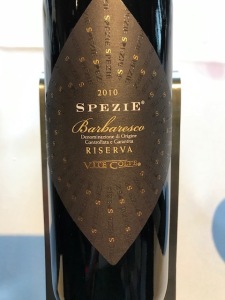 2015 Vite Colte Barolo del Commune di Barolo Essenze. Tasting of black fruit, rose petals, and tobacco, chewy tannins and vibrant acid drove this wine along to a haunting balsamic-laced finish. The 2010 Vite Colte Barbaresco Spezie Rieserva was also alluring with its violet, currant, and clove notes. Two years aging in small oak barrels and one year in bottle melded both of these wines into ethereal delights for Nebbiolo lovers. Both wines are produced only in the best vintage years so snap them up if you can find them.
2015 Vite Colte Barolo del Commune di Barolo Essenze. Tasting of black fruit, rose petals, and tobacco, chewy tannins and vibrant acid drove this wine along to a haunting balsamic-laced finish. The 2010 Vite Colte Barbaresco Spezie Rieserva was also alluring with its violet, currant, and clove notes. Two years aging in small oak barrels and one year in bottle melded both of these wines into ethereal delights for Nebbiolo lovers. Both wines are produced only in the best vintage years so snap them up if you can find them.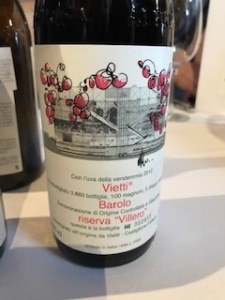 Following along the Barolo path, I was early enough to the tasting to try the 2012 Vietti Barolo Villero Riserva. This wine was only produced 13 times out of the last 38 years and is a tiny production of 3860 bottles. Made from a south/southwest-facing vineyard near Castiglione Falletto, the Vietti portion of the Villero vineyard is barely one hectare in size. Clay soils and 43-year old vines contributed to cascading notes of crushed violet, dried red cherry, and iron nestled among dense tannins and refreshing acidity. Aged in large oak casks and unfiltered before bottling, this wine was pure unadulterated bliss. For the points lovers, this wine achieved 100 points in 2007 and 2009 and 99 points in 2010.
Following along the Barolo path, I was early enough to the tasting to try the 2012 Vietti Barolo Villero Riserva. This wine was only produced 13 times out of the last 38 years and is a tiny production of 3860 bottles. Made from a south/southwest-facing vineyard near Castiglione Falletto, the Vietti portion of the Villero vineyard is barely one hectare in size. Clay soils and 43-year old vines contributed to cascading notes of crushed violet, dried red cherry, and iron nestled among dense tannins and refreshing acidity. Aged in large oak casks and unfiltered before bottling, this wine was pure unadulterated bliss. For the points lovers, this wine achieved 100 points in 2007 and 2009 and 99 points in 2010.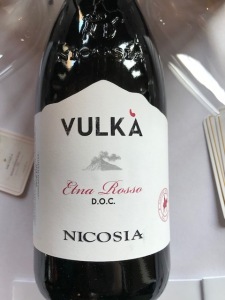
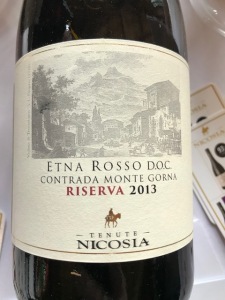 The Monte Gorna Riserva comes from an extinguished crater by the same name which is located at 750 meters and filled with lava terraces. Grapes are hand-picked and selected for this elegant and regal wine. Predominantly Nerello Mascalese at 90% with 10% Nerello Cappuccio, this wine fermented on its skins for 3 weeks followed by 24 months in French oak barrels and 12 months in bottle. Careful attention to every detail produced this beauty tasting of licorice, dried red cherry, freshly-tilled earth, and tobacco flavors.
The Monte Gorna Riserva comes from an extinguished crater by the same name which is located at 750 meters and filled with lava terraces. Grapes are hand-picked and selected for this elegant and regal wine. Predominantly Nerello Mascalese at 90% with 10% Nerello Cappuccio, this wine fermented on its skins for 3 weeks followed by 24 months in French oak barrels and 12 months in bottle. Careful attention to every detail produced this beauty tasting of licorice, dried red cherry, freshly-tilled earth, and tobacco flavors. Also from Sicily, Cottanera had a stunning expression of Carricante in their 2018 Etna Bianco. A complex nose of lemon, jasmine, and cedar culminated in a full-bodied wine with mouth-coating waxiness from 6 months of lees aging.
Also from Sicily, Cottanera had a stunning expression of Carricante in their 2018 Etna Bianco. A complex nose of lemon, jasmine, and cedar culminated in a full-bodied wine with mouth-coating waxiness from 6 months of lees aging.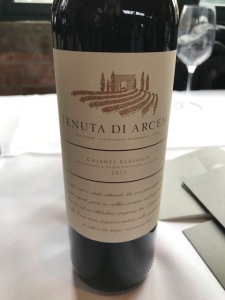 Wines in Napa. Jackson Family has acquired several wineries around the world and having been fortunate enough to visit several, I always come away impressed with their selections. Tenuta di Arceno had a terrific offering of a Chianti Classico and two Super Tuscans, one Merlot-dominant (2013 Valadorna) and one Cabernet Franc-dominant (2013 Arcanum). Both were delicious but I favored the Valadorna which was a blend of 74% Merlot, 12% Cabernet Sauvignon, 23% Cabernet Franc, 1% Petit Verdot. Full of ripe plum, blueberry, and sweet spice, this wine showcased Merlot at its finest.
Wines in Napa. Jackson Family has acquired several wineries around the world and having been fortunate enough to visit several, I always come away impressed with their selections. Tenuta di Arceno had a terrific offering of a Chianti Classico and two Super Tuscans, one Merlot-dominant (2013 Valadorna) and one Cabernet Franc-dominant (2013 Arcanum). Both were delicious but I favored the Valadorna which was a blend of 74% Merlot, 12% Cabernet Sauvignon, 23% Cabernet Franc, 1% Petit Verdot. Full of ripe plum, blueberry, and sweet spice, this wine showcased Merlot at its finest. Wrapping up, the Franciacorta offerings were off-the-chart impressive. Two producers I tried were Ferghettina and Ricci Curbastro, both amazingly rich and complex in style. Ferghettina has a unique square bottle which they created to increase the contact surface area between the wine and the yeast. This results in enhanced aromatics in the wine as it ages.
Wrapping up, the Franciacorta offerings were off-the-chart impressive. Two producers I tried were Ferghettina and Ricci Curbastro, both amazingly rich and complex in style. Ferghettina has a unique square bottle which they created to increase the contact surface area between the wine and the yeast. This results in enhanced aromatics in the wine as it ages.
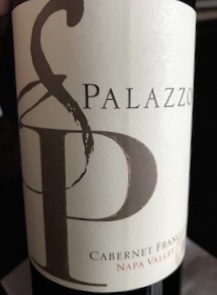 2012 Palazzo Cabernet Franc ($95)
2012 Palazzo Cabernet Franc ($95)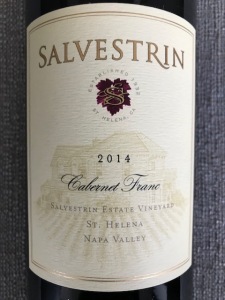
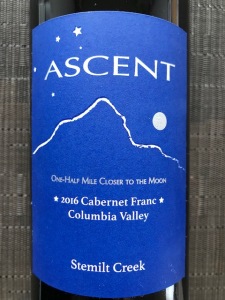 Switching states, the 2016 Stemilt Creek Ascent Cabernet Franc ($48) from Columbia Valley, Washington is another great one to try. Richard Hood, the winemaker there, makes this wine in select vintages based on when conditions are right to “showcase varietal expression in its purest form”. These grapes come from their Wenatchee estate vineyards where they are grown on steep north-facing slopes which promote slow ripening and dense flavor concentration.
Switching states, the 2016 Stemilt Creek Ascent Cabernet Franc ($48) from Columbia Valley, Washington is another great one to try. Richard Hood, the winemaker there, makes this wine in select vintages based on when conditions are right to “showcase varietal expression in its purest form”. These grapes come from their Wenatchee estate vineyards where they are grown on steep north-facing slopes which promote slow ripening and dense flavor concentration.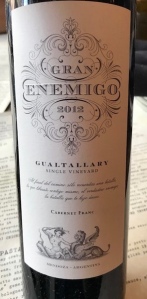 Another marvelous expression of Cabernet Franc is found in the 2012 Gran Enemigo Single Vineyard Gualtallary ($125) from Mendoza, Argentina. I had this wine for the first time a few months ago and was bowled over by it. Although I’m not big points person, Robert Parker apparently was too as he gave this wine 95 points. Made from 85% Cabernet Franc and 15% Malbec, this wine showcases decadent notes of black cherry, blackberry, sweet spice, and thyme with powdery fine tannins, lively acidity, and a spicy long finish. While not cheap, compared to other wines in its category, it’s a wine worthy of its price.
Another marvelous expression of Cabernet Franc is found in the 2012 Gran Enemigo Single Vineyard Gualtallary ($125) from Mendoza, Argentina. I had this wine for the first time a few months ago and was bowled over by it. Although I’m not big points person, Robert Parker apparently was too as he gave this wine 95 points. Made from 85% Cabernet Franc and 15% Malbec, this wine showcases decadent notes of black cherry, blackberry, sweet spice, and thyme with powdery fine tannins, lively acidity, and a spicy long finish. While not cheap, compared to other wines in its category, it’s a wine worthy of its price.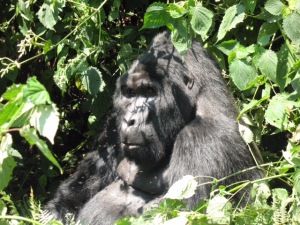 I was one of those people profoundly touched by “Gorillas in the Mist” years ago when it came out as I’d been fascinated with gorillas since childhood. Seeing them in their natural habitat was a long-time dream of mine that finally got realized last month thanks to a great surprise trip from my husband in concert with award-winning safari company African Portfolio. As high as my expectations were, the actual experience surpassed them all. Flying over the lush, green-forested expanse leading into Bwindi Impenetrable National Park in Uganda, it was hard to believe I was so close to the home of these magnificent creatures.
I was one of those people profoundly touched by “Gorillas in the Mist” years ago when it came out as I’d been fascinated with gorillas since childhood. Seeing them in their natural habitat was a long-time dream of mine that finally got realized last month thanks to a great surprise trip from my husband in concert with award-winning safari company African Portfolio. As high as my expectations were, the actual experience surpassed them all. Flying over the lush, green-forested expanse leading into Bwindi Impenetrable National Park in Uganda, it was hard to believe I was so close to the home of these magnificent creatures.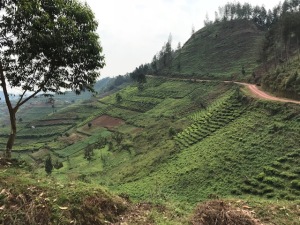
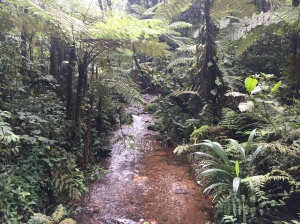 That rather ominous word “impenetrable” is not to be understated here. Bwindi is truly a dense labyrinth of a forest complete with trees of all kinds (many with their own type of painful thorn), tangled brush and vines that have become one endless web, and insects that have found their own special heaven swarming about in such droves that there is usually a dull hum in the background.
That rather ominous word “impenetrable” is not to be understated here. Bwindi is truly a dense labyrinth of a forest complete with trees of all kinds (many with their own type of painful thorn), tangled brush and vines that have become one endless web, and insects that have found their own special heaven swarming about in such droves that there is usually a dull hum in the background. It was magical to see the gorillas going about their natural activities. We saw one of the largest silver-backs (males) in the Park from about 6 feet away pulling leaves off a tree and eating in a constant stream. We saw babies swinging through the trees in carefree abandon, a mother digging in a tree hole for ants (apparently a rare protein for them that they love to find when available), and another male deciding if we were threatening him and his family or not. Mostly, I reveled in their penetrating brown-orange eyes, thick black coats, and their incredibly similar human features and habits. Just to be so near them in their own world was an indescribable delight.
It was magical to see the gorillas going about their natural activities. We saw one of the largest silver-backs (males) in the Park from about 6 feet away pulling leaves off a tree and eating in a constant stream. We saw babies swinging through the trees in carefree abandon, a mother digging in a tree hole for ants (apparently a rare protein for them that they love to find when available), and another male deciding if we were threatening him and his family or not. Mostly, I reveled in their penetrating brown-orange eyes, thick black coats, and their incredibly similar human features and habits. Just to be so near them in their own world was an indescribable delight.
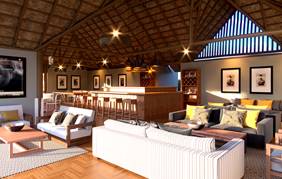
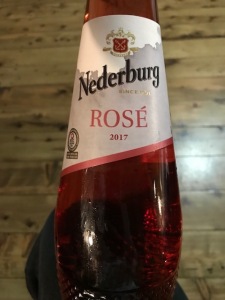 The 2017 Nederburg Rosé was also on-hand. Tasting of zesty strawberry and herbs with a slight pepper crunch, this wine was the perfect refreshment at the end of a hot and demanding hike.
The 2017 Nederburg Rosé was also on-hand. Tasting of zesty strawberry and herbs with a slight pepper crunch, this wine was the perfect refreshment at the end of a hot and demanding hike.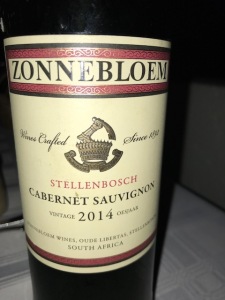
 Another fascinating drink was the Uganda Waragi which is a local gin (40% ABV) made from a unique combination of botanicals including lime peel, nutmeg, and cassia bark. The botanicals combined with the fresh waters of nearby Lake Victoria, lime zest, and Greek juniper berries give this gin strong aromatics and a tangy lime flavor. We were told several times that stories get much better after consuming this drink!
Another fascinating drink was the Uganda Waragi which is a local gin (40% ABV) made from a unique combination of botanicals including lime peel, nutmeg, and cassia bark. The botanicals combined with the fresh waters of nearby Lake Victoria, lime zest, and Greek juniper berries give this gin strong aromatics and a tangy lime flavor. We were told several times that stories get much better after consuming this drink!
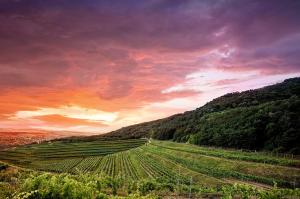

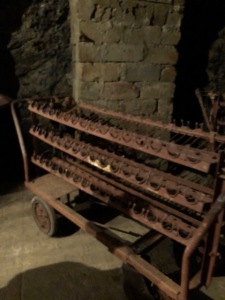

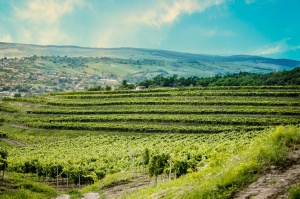
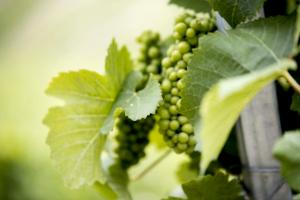
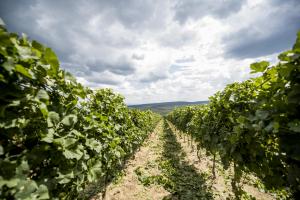
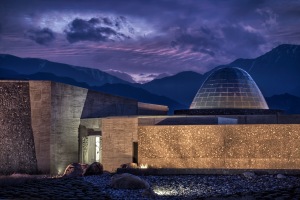
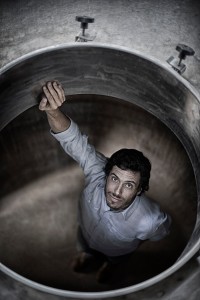
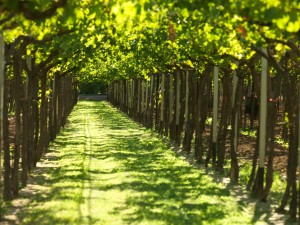
 We started our tasting with Argentina’s best-known white grape, Torrontés. This grape has a unique texture and aromatics which make it beloved on a blind tasting. As Torrontés is a cross between Criolla Chica (known as the Mission grape in U.S.) and Muscat of Alexandria, it combines the exuberant florals of the latter with the workhorse nature of the former. I’ve had a few in the past that were uninspiring but this one from Salta, the 2017 Zuccardi Serie A Torrontés, was impressive. Pale lemon in color with green tints, this vivacious wine radiated salty citrus and pineapple aromas cushioned in crisp minerality. Torrontés’ trademark waxy texture announced its arrival with an almost effervescent tingle on the nose.
We started our tasting with Argentina’s best-known white grape, Torrontés. This grape has a unique texture and aromatics which make it beloved on a blind tasting. As Torrontés is a cross between Criolla Chica (known as the Mission grape in U.S.) and Muscat of Alexandria, it combines the exuberant florals of the latter with the workhorse nature of the former. I’ve had a few in the past that were uninspiring but this one from Salta, the 2017 Zuccardi Serie A Torrontés, was impressive. Pale lemon in color with green tints, this vivacious wine radiated salty citrus and pineapple aromas cushioned in crisp minerality. Torrontés’ trademark waxy texture announced its arrival with an almost effervescent tingle on the nose.
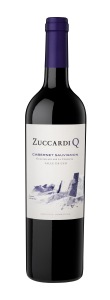 We moved on to the reds after that and these were a real treat. We started with a side-by-side tasting of the 2013 Zuccardi Q Cabernet Sauvignon (from Valle de Uco) and the 2013 Zuccardi Q Tempranillo (from Santa Rosa). The Cabernet came from two high elevation sites – Tupungato (4035 feet) and La Consulta (3608 feet) in the Uco Valley. Intensely purple in color, this wine tasted of red and black fruit with savory herbs. Firm tannins and zesty acidity supported the ripe fruit in this fresh and spicy wine.
We moved on to the reds after that and these were a real treat. We started with a side-by-side tasting of the 2013 Zuccardi Q Cabernet Sauvignon (from Valle de Uco) and the 2013 Zuccardi Q Tempranillo (from Santa Rosa). The Cabernet came from two high elevation sites – Tupungato (4035 feet) and La Consulta (3608 feet) in the Uco Valley. Intensely purple in color, this wine tasted of red and black fruit with savory herbs. Firm tannins and zesty acidity supported the ripe fruit in this fresh and spicy wine. 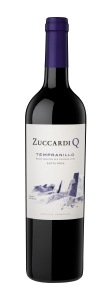
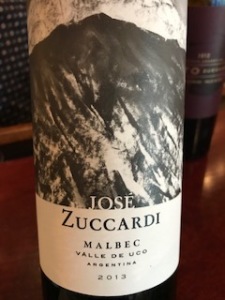 The 2013 José Zuccardi, from the Valle de Uco region, was named for Sebastián’s father José and made from 90% Malbec (from Paraje Altamira) and 10% Cabernet Sauvignon (from Gualtallary). This robust wine was excellent with concentrated blackberry and plum notes, vibrant acidity, and a spicy elegant finish. Vinified in concrete vats and fermented with indigenous yeasts, the wine was then aged in oak foudres and bottled without filtering.
The 2013 José Zuccardi, from the Valle de Uco region, was named for Sebastián’s father José and made from 90% Malbec (from Paraje Altamira) and 10% Cabernet Sauvignon (from Gualtallary). This robust wine was excellent with concentrated blackberry and plum notes, vibrant acidity, and a spicy elegant finish. Vinified in concrete vats and fermented with indigenous yeasts, the wine was then aged in oak foudres and bottled without filtering.
 Last but not least, we got to try the 2016 Santa Julia Tardio (Late Harvest Torrontés). What a cool wine this was! At only 7.5% alcohol but 130 grams of residual sugar, this wine was shockingly dry on the palate with a svelte body and the Torrontés trademark texture. Fresh peach, pear, orange peel, and apricot flavors interlaced seamlessly with honey and almond notes, all backed by vibrant acidity and an ample yet lightweight feel on the palate. This was a very unique and sumptuous wine, perfect with cheese and dessert.
Last but not least, we got to try the 2016 Santa Julia Tardio (Late Harvest Torrontés). What a cool wine this was! At only 7.5% alcohol but 130 grams of residual sugar, this wine was shockingly dry on the palate with a svelte body and the Torrontés trademark texture. Fresh peach, pear, orange peel, and apricot flavors interlaced seamlessly with honey and almond notes, all backed by vibrant acidity and an ample yet lightweight feel on the palate. This was a very unique and sumptuous wine, perfect with cheese and dessert.
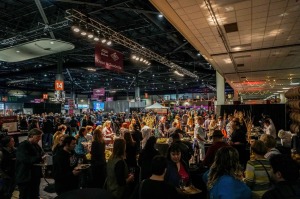
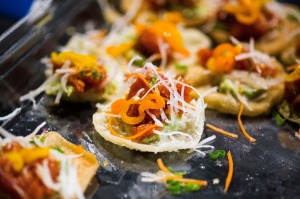
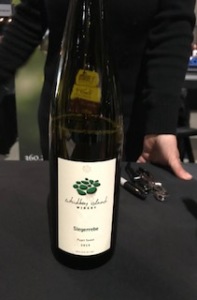 From a wine tasting perspective, there were too many festival highlights to count but here are a brief few. The most interesting grape we tried was the Siegerrebe from Whidbey Island Winery. Whidbey Island is a cool growing site located an hour from Seattle. Siegerrebe is a white German grape and the 2015 Estate Siegerrebe ($18) had tingling acidity backed by cascading citrus flavors – a unique alternative for Sauvignon Blanc lovers. Whidbey Island Winery also made a terrific 2016 Sangiovese ($22) with grapes sourced from Columbia Valley in eastern Washington as the island is too cool for red grapes.
From a wine tasting perspective, there were too many festival highlights to count but here are a brief few. The most interesting grape we tried was the Siegerrebe from Whidbey Island Winery. Whidbey Island is a cool growing site located an hour from Seattle. Siegerrebe is a white German grape and the 2015 Estate Siegerrebe ($18) had tingling acidity backed by cascading citrus flavors – a unique alternative for Sauvignon Blanc lovers. Whidbey Island Winery also made a terrific 2016 Sangiovese ($22) with grapes sourced from Columbia Valley in eastern Washington as the island is too cool for red grapes.
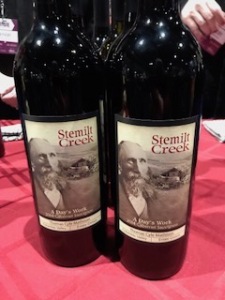 Stemilt Creek Winery won the award for most charismatic staffers. Shelly and Karen were hugely entertaining and enthusiastic about pouring their wines. The 2015 Ascent Estate Cabernet Franc ($48) and the 2015 Ascent Estate Syrah ($45) were highlights here. Richard Hood also recently joined Stemilt Creek as their General Manager and Winemaker bringing a wealth of experience to the winery.
Stemilt Creek Winery won the award for most charismatic staffers. Shelly and Karen were hugely entertaining and enthusiastic about pouring their wines. The 2015 Ascent Estate Cabernet Franc ($48) and the 2015 Ascent Estate Syrah ($45) were highlights here. Richard Hood also recently joined Stemilt Creek as their General Manager and Winemaker bringing a wealth of experience to the winery. There was fantastic cheese everywhere and along one side of the room was a large array of desserts and chocolate. jcoco was one of the best, offering 10 different flavored bars including Bali Sea Salt Toffee Milk, Arabica Espresso Dark, Black Fig Pistaccio Dark, and Vanuatu Coconut Pecan Milk among others. Their women-owned company’s mission is also noteworthy as they donate a fresh meal to someone in need for each chocolate bar purchased; so far 2.6 million servings have been donated. Look for this chocolate nationally at Williams-Sonoma.
There was fantastic cheese everywhere and along one side of the room was a large array of desserts and chocolate. jcoco was one of the best, offering 10 different flavored bars including Bali Sea Salt Toffee Milk, Arabica Espresso Dark, Black Fig Pistaccio Dark, and Vanuatu Coconut Pecan Milk among others. Their women-owned company’s mission is also noteworthy as they donate a fresh meal to someone in need for each chocolate bar purchased; so far 2.6 million servings have been donated. Look for this chocolate nationally at Williams-Sonoma. If you go, Seattle is a beautiful city with ever-changing weather and incredible sea views. It has San Francisco’s exotic feel mixed with Boston’s quaint brick buildings and winding streets in the older section of town. If you’re a foodie, you’ll be in heaven as the list of eclectic restaurants is long and fulfilling combing world-class food with a down-to-earth vibe. Try The Pink Door, AQUA, and Matt’s in the Market for some excellent options.
If you go, Seattle is a beautiful city with ever-changing weather and incredible sea views. It has San Francisco’s exotic feel mixed with Boston’s quaint brick buildings and winding streets in the older section of town. If you’re a foodie, you’ll be in heaven as the list of eclectic restaurants is long and fulfilling combing world-class food with a down-to-earth vibe. Try The Pink Door, AQUA, and Matt’s in the Market for some excellent options.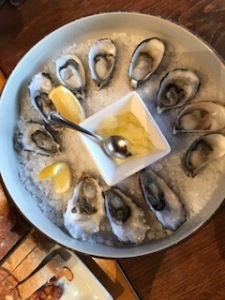
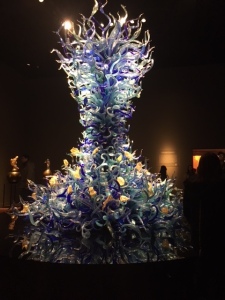
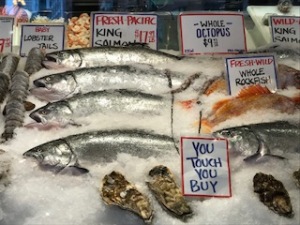
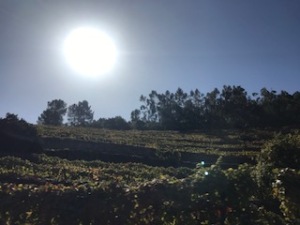 If there was one word to describe our visit to the Douro Valley last fall it was “sun-dappled”. I don’t recall seeing light in so many nuanced colors and rays of intensity as we did driving through the spectacular Douro Valley. Breath-taking slopes and stone-walled terraces dotted the rugged landscape with vines clinging to every last angle in unpredictable patterns illustrating their quest to survive.
If there was one word to describe our visit to the Douro Valley last fall it was “sun-dappled”. I don’t recall seeing light in so many nuanced colors and rays of intensity as we did driving through the spectacular Douro Valley. Breath-taking slopes and stone-walled terraces dotted the rugged landscape with vines clinging to every last angle in unpredictable patterns illustrating their quest to survive.
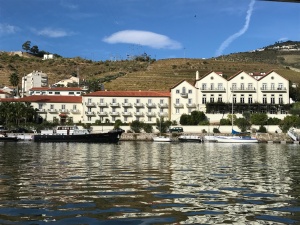



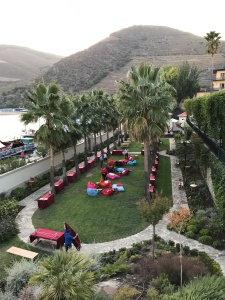
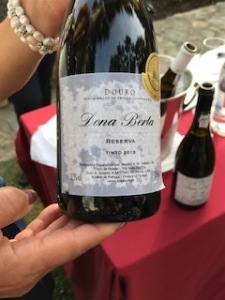 Some harvest party wine highlights were the Morgadio da Calçada Mimi Espumante Bruto (a lean but luscious sparkling wine), 2015 Quinta do Besuvio Pombal do Vesuvio, Dona Berta Reserva Tinto 2013 (medium-bodied red fruit delight), and Lavradores de Feitoria Três Bagos 2009 (full-bodied menagerie of black/red fruit and smoky finish).
Some harvest party wine highlights were the Morgadio da Calçada Mimi Espumante Bruto (a lean but luscious sparkling wine), 2015 Quinta do Besuvio Pombal do Vesuvio, Dona Berta Reserva Tinto 2013 (medium-bodied red fruit delight), and Lavradores de Feitoria Três Bagos 2009 (full-bodied menagerie of black/red fruit and smoky finish).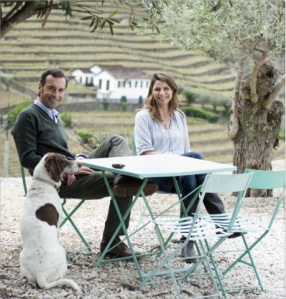


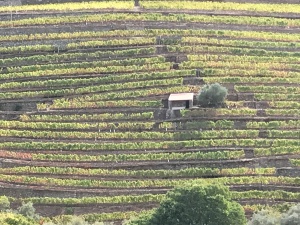
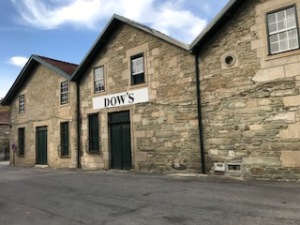 We visited Quinta do Bomfim which has a fascinating 90-minute tour followed by several different tasting menus of various Ports which you can enjoy out on their expansive patio. We tried the Vintage Port tasting which included the Dow’s 1985 Vintage Port, Quinta do Vesuvio 1995 Vintage Port, and the Graham’s 2000 Vintage Port. While all were exceptional, the 1985 stole the show with its dried cranberry, apricot, orange peel, and spicy tobacco notes backed by racy acidity and surprisingly dry finish.
We visited Quinta do Bomfim which has a fascinating 90-minute tour followed by several different tasting menus of various Ports which you can enjoy out on their expansive patio. We tried the Vintage Port tasting which included the Dow’s 1985 Vintage Port, Quinta do Vesuvio 1995 Vintage Port, and the Graham’s 2000 Vintage Port. While all were exceptional, the 1985 stole the show with its dried cranberry, apricot, orange peel, and spicy tobacco notes backed by racy acidity and surprisingly dry finish.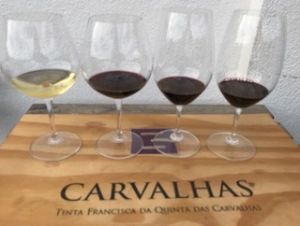
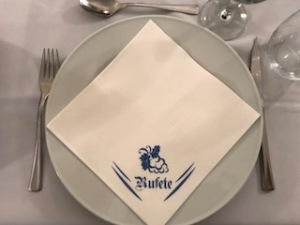 We found one of the neatest experiences was at a tiny
We found one of the neatest experiences was at a tiny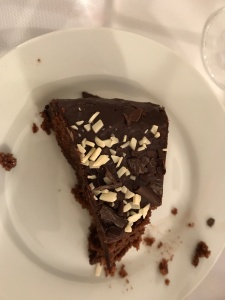
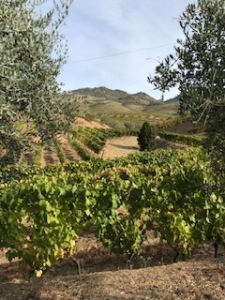
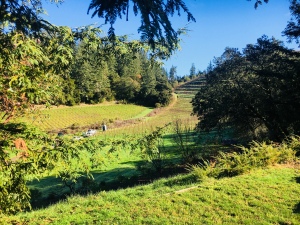
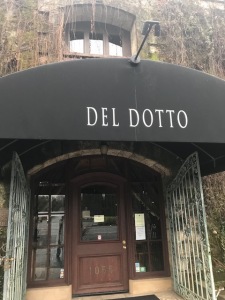 We kicked off our long weekend at Del Dotto which always gives a great tour with barrel tastings, good humor, and sumptuous wines. It’s also a terrific learning experience as the barrel tastings offer a glimpse into how different types of oak impact a wine’s development as well as how wine develops in general before it gets bottled.
We kicked off our long weekend at Del Dotto which always gives a great tour with barrel tastings, good humor, and sumptuous wines. It’s also a terrific learning experience as the barrel tastings offer a glimpse into how different types of oak impact a wine’s development as well as how wine develops in general before it gets bottled.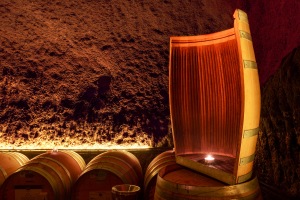
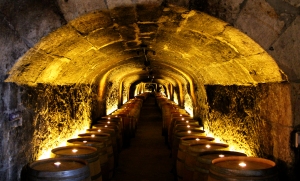


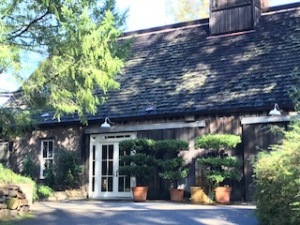
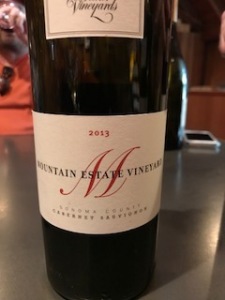 2013 Mountain Estate Cabernet Sauvignon ($95 and from Sonoma) – dark and brooding with concentrated blackberry, plum, and savory spice with a firm dense structure and lush finish. Made from 87% Cabernet Sauvignon, 6% Cabernet Franc, 6% Merlot, and 1% Syrah.
2013 Mountain Estate Cabernet Sauvignon ($95 and from Sonoma) – dark and brooding with concentrated blackberry, plum, and savory spice with a firm dense structure and lush finish. Made from 87% Cabernet Sauvignon, 6% Cabernet Franc, 6% Merlot, and 1% Syrah.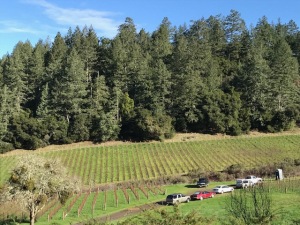
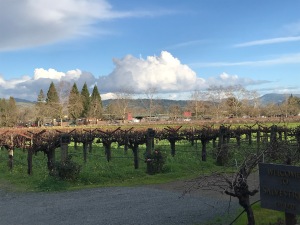

 The 2013 Three D Cabernet Sauvignon ($145) is 100% Cabernet Sauvignon and was recently released as it spent 34 months in 100% new French oak. Sustainable growing practices and rigorous selection make this wine a true standout (the “Three D” stands for the three Salvestrin daughters). This wine expressed intense aromas of tart black cherries, plums, and dried herbs while a velvet finish eased in seductive notes of sweet spice and earthy mineral notes.
The 2013 Three D Cabernet Sauvignon ($145) is 100% Cabernet Sauvignon and was recently released as it spent 34 months in 100% new French oak. Sustainable growing practices and rigorous selection make this wine a true standout (the “Three D” stands for the three Salvestrin daughters). This wine expressed intense aromas of tart black cherries, plums, and dried herbs while a velvet finish eased in seductive notes of sweet spice and earthy mineral notes.